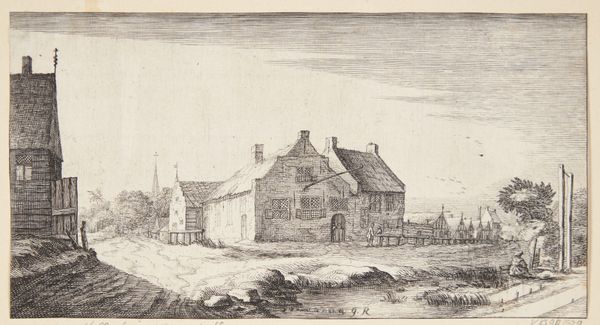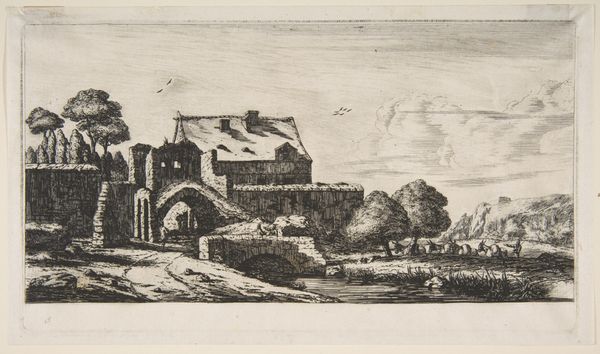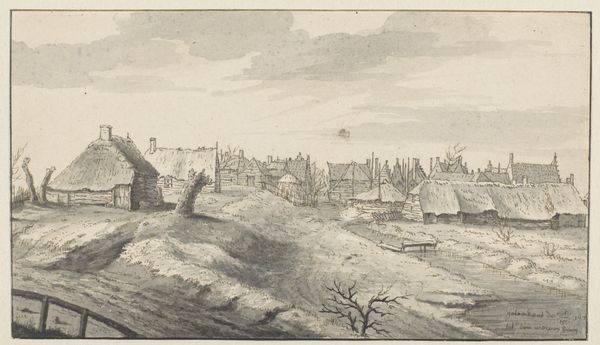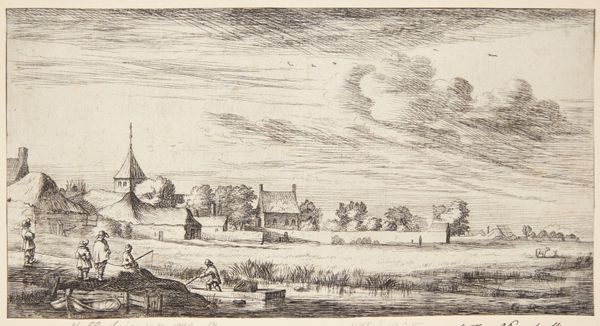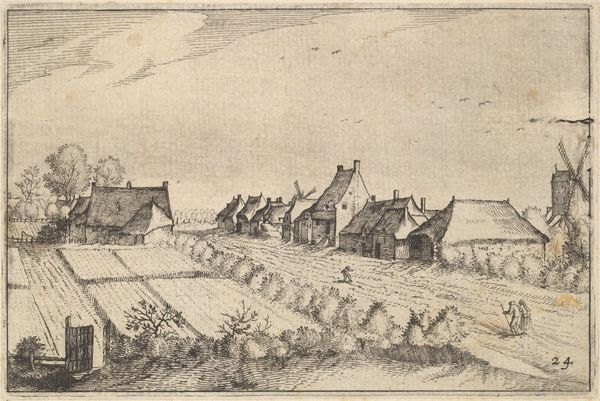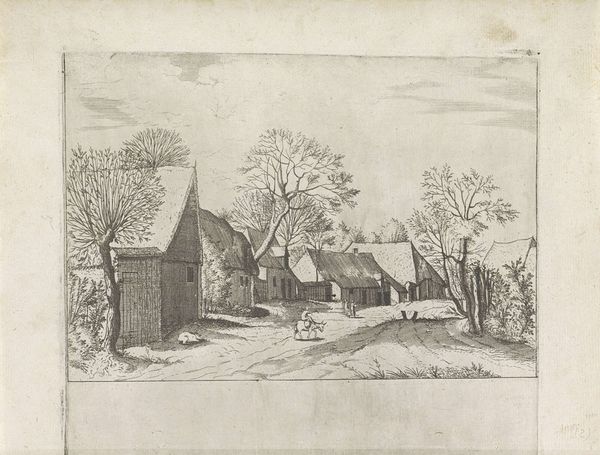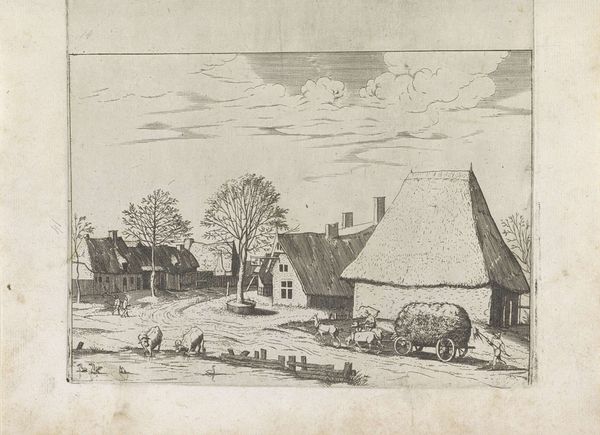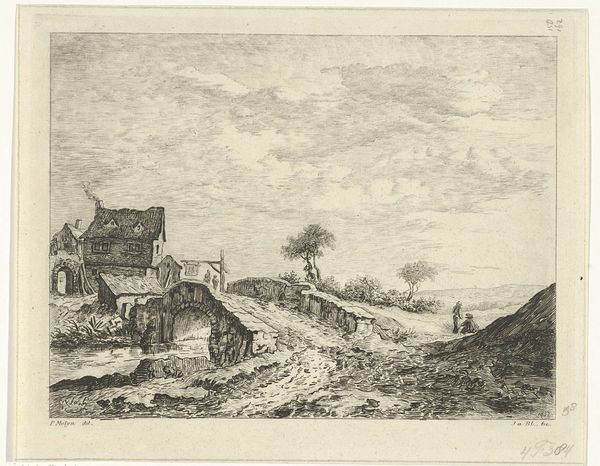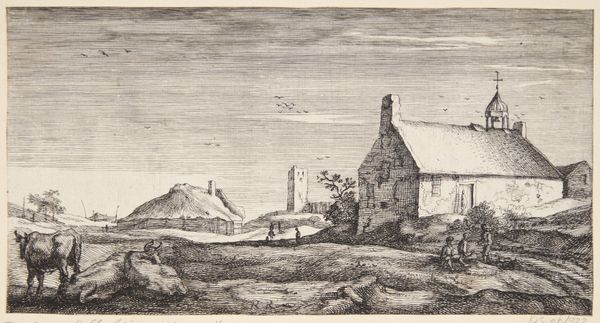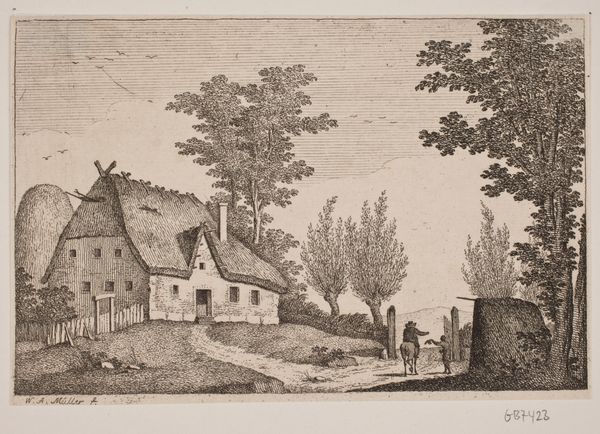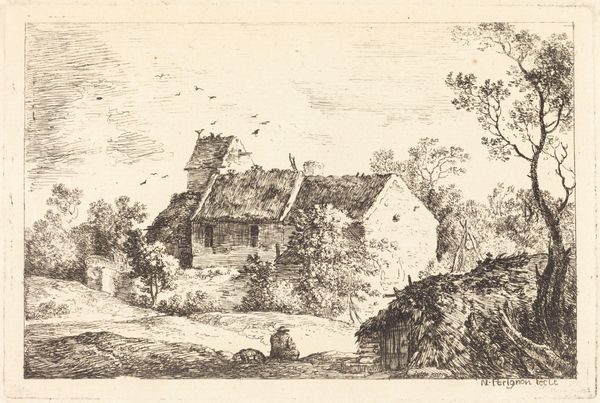
print, etching
#
dutch-golden-age
# print
#
etching
#
landscape
Dimensions: 114 mm (height) x 220 mm (width) (bladmaal)
Geertruyt Roghman made this etching, ‘Udsigt mod Spaarnwoude’, in the Netherlands sometime in the mid-17th century. Roghman was one of the few women artists working at this time, which makes this image particularly interesting from a social perspective. This print gives us a glimpse into the landscape and life of the Dutch Golden Age. Look closely, and you'll see details like the towering church, humble thatched-roof houses, a distant windmill, and figures gathered outside a tavern. These elements speak volumes about the culture of the time. The prominence of the church indicates the importance of religion in daily life, while the tavern suggests a place for social gathering. To understand this work fully, we must consider the economic prosperity of the Netherlands during this period, driven by trade and commerce. Roghman’s image seems to show a rural life untouched by such economic progress. By studying maps, probate records, and other archival materials, we can learn more about the lives of those depicted in this scene. Art history helps us view the past through a lens of social and institutional context.
Comments
No comments
Be the first to comment and join the conversation on the ultimate creative platform.

